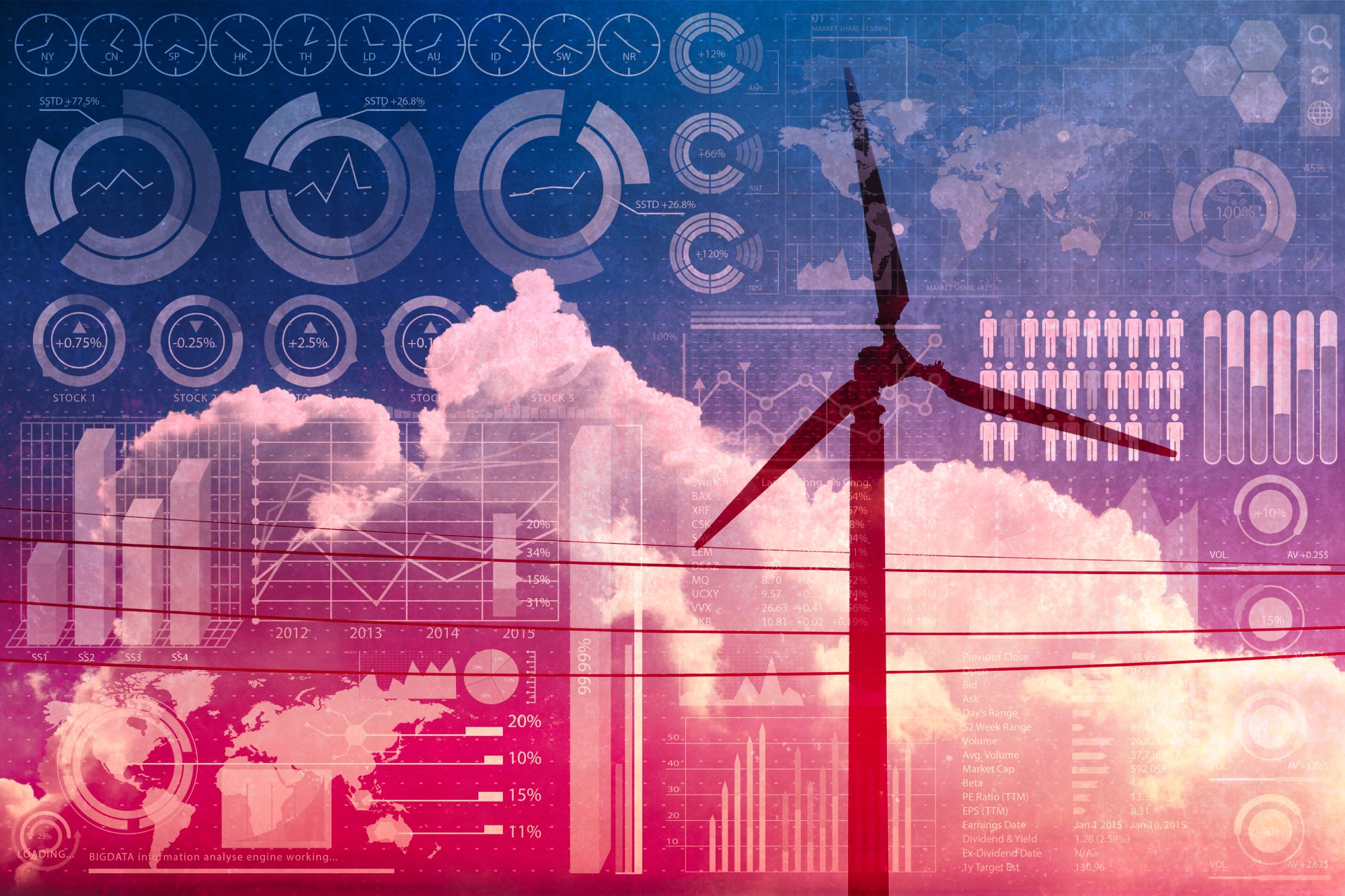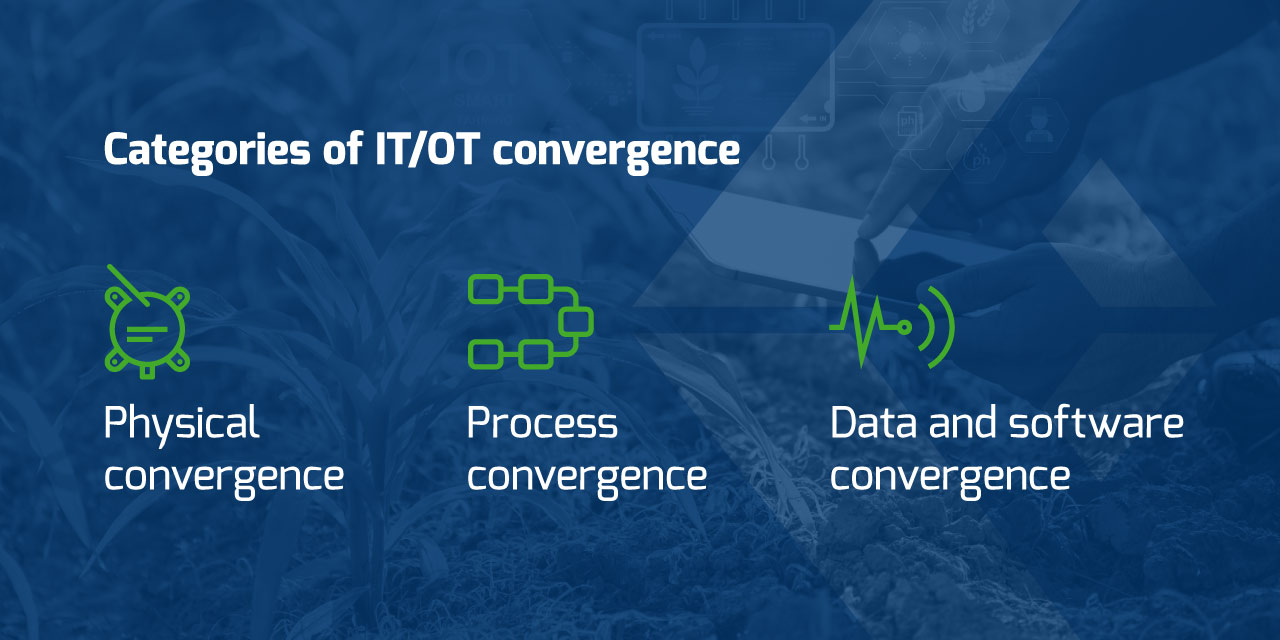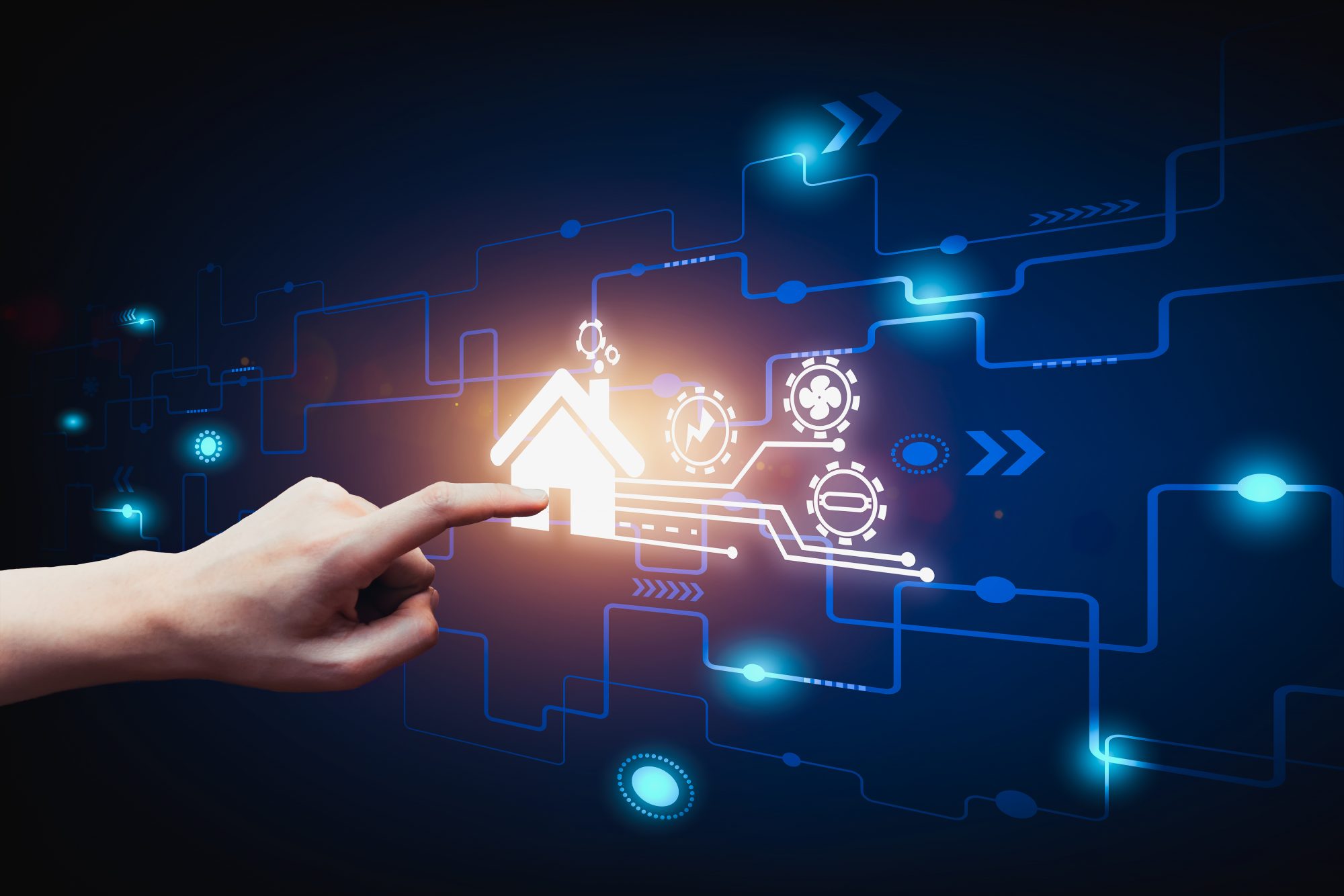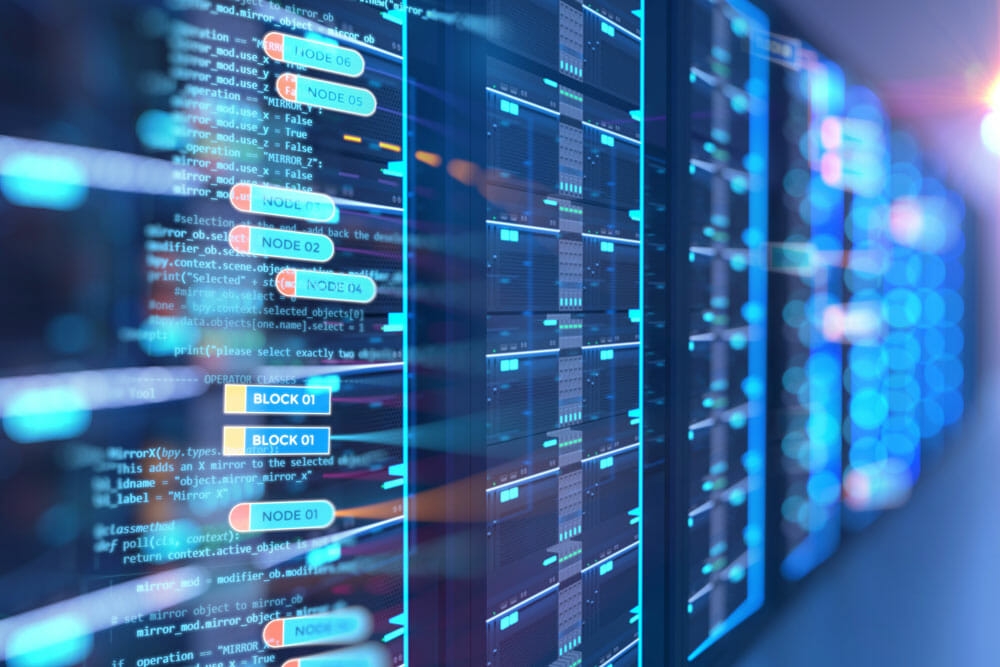IT stands for information technology. An IT system is used for data-centric computing and communication.
Traditionally, operations technology (OT) and information technology (IT) have occupied different domains in the utilities industry. However, recent technological advances and increases in data accumulation are causing IT and OT to converge.
IT/OT Convergence and Digital Grid Solutions
The fields of artificial intelligence (AI) and advanced analytics allow utilities to leverage the data that operational technology solutions collect and use this data to increase operational efficiency, make better decisions and predict outages and failures. By converging IT and OT, companies will have a utility technology ecosystem that is far more integrated.
The main benefit of this integration is more effective management of IT and OT processes at every level of your organization. The convergence of the two parts creates a centralized component, which enables greater visibility into key business processes and functions.
IT/OT Glossary
There are a few terms you should know as you navigate the IT/OT convergence process, including IT, OT, digital grid solution and distributed energy resources.
OT stands for operations technology. An OT system monitors devices, processes and events, along with making adjustments in industrial and enterprise operations. OT focuses on controlling and managing physical devices operating in the physical world.
A digital grid solution includes services and consulting related to end-to-end IT/OT integration, implementation and optimization, allowing utilities to navigate the convergence of IT and OT.
DERs allow utilities to improve their capabilities. DERs include microgrids, wind turbines, solar panels and energy storage that enable utilities to identify a different approach to traditional grid operations. Distributed energy resource management unifies these different resources into one system for easier monitoring.
The Advantages of Merging IT and OT
IT/OT convergence is essential for digital transformation initiatives like the industrial internet of things (IIoT), which enables companies to unlock digital operations at a massive scale.
Some of the other benefits of IT/OT convergence include:
- Greater visibility: OT data collected from IoT devices provides real-time visibility into elements like production activities and machine condition for more effective decision-making.
- Cost savings: Access to real-time insights enables you to make more informed decisions for efficient resource usage and maintenance activities, which can save your company thousands year over year.
- Enhanced automation: Greater connectivity between OT and IT systems enables more efficient process automation, boosting productivity and freeing human employees up to focus on other tasks.
- Predictive maintenance: Integrated IoT sensors provide real-time updates on infrastructure conditions, so you know exactly when to perform maintenance. This capability allows you to minimize the impact of both planned and unplanned downtime.
- Improved compliance: With more visibility into your industrial operations, adhering to critical industry standards and regulations becomes easier.
- Centralized management: By converging all IT and OT assets under one common methodology, you can efficiently identify and improve on areas of resource underutilization.
Essentially, IT/OT convergence enables you to centralize the different components of your organization for more effective collaboration and decision-making.

A Strategic Roadmap for IT/OT Integration
Creating a strategic roadmap is a critical step in successful IT/OT integration projects, as it provides a clear guideline to follow through each step of the process.
Although each company’s IT/OT convergence strategy will look different based on its business model, these tips can help you create the most effective roadmap possible:
- Align use cases with business initiatives: Clearly define the benefits and necessity of each digital use case to increase buy-in from stakeholders.
- Introduce Agile methodology: Agile business practices enable companies to rapidly change course in response to market changes and fluctuations. Although there will be uncertainty in the planning and development stages, adopting this methodology will help improve business resilience.
- Create a digital center of excellence (CoE): Gather a team of IT and OT professionals to define digital use cases that are both clear and scalable. This team can also help facilitate better collaboration between your IT and OT teams for greater productivity.
- Clearly communicate goals: Ensure both IT and OT groups understand the big picture by outlining your overarching business goals early on.
The right software and hardware tools are also essential for successful IT/OT integration. Regardless of the tool you select, it should offer capabilities for data discovery, configuration, centralized management and cybersecurity. Consulting with experts in digital solutions can help you find the right technologies for your specific use cases.
Essentials of IT/OT Networking
Although every utility company has different requirements, all IT/OT networking initiatives share several key elements.
The foundational components of an IT/OT convergence project include:
- Shared governance: Establishing clear roles and responsibilities for all parties helps ensure consistency across all processes and metrics.
- Process harmonization: Defining key checkpoints in processes aids in delivering digital use cases that clearly align with your business goals. Additionally, process harmonization helps you resolve problems before they can interfere with your progress.
- Common KPIs: Tracking IT and OT metrics connected to quality, resilience and productivity provides evidence for project benefits, which can help you get support for future scaling.
- Skill acquisition: Modern technologies require employees to learn new skills. In-house training programs or consultations with external professional agencies can help your company gain the necessary skills for lasting success.

IT and OT integration is the convergence of IT and OT — two traditionally separate systems — to merge business insights, controls and processes in a single uniform environment. This convergence allows utilities to reduce errors, improve efficiency, enhance workflows, gain competitive advantages and cut costs.
IT/OT integration aims to bring physical equipment and devices (OT) into the digital realm (IT). Advances like machine-to-machine communication and the introduction of connected actuators and sensors allow for the wireless communication of relevant data from a physical system back to the central server. Results can be passed to the physical system, allowing for more autonomous operation, benefitting maintenance, improving uptime and enhancing accuracy.
IT/OT convergence merges traditionally separate networking, management, servers and storage tools into one centrally managed, cohesive product. IT/OT convergence is not a single effort or initiative, and the initiatives can go in various directions depending on the utility’s goals and needs. The main categories of IT/OT convergence include physical convergence, process convergence and data and software convergence.
Physical convergence: This type of convergence includes physical devices being retrofitted or converged with newer hardware that can accommodate IT being added to traditional OT. This operational convergence occurs when physical assets are updated and maintained, which may include purchasing new OT systems like electricity distribution, transportation systems management and critical energy infrastructure management or aftermarket devices that facilitate data control and communication.
- Process convergence: This type of convergence refers to the convergence of workflows. OT and IT departments need to reform the company’s processes and ensure important projects are communicated between departments.
- Data and software convergence: This type of convergence covers obtaining the data and software to address OT needs. This technical convergence involves the business’s network architecture.
IT refers to the use of computers, network and storage devices, along with other physical devices, processes and infrastructure used to create, store, process, exchange and secure every form of electronic data.
While IT focuses on communication and data, OT focuses on outcomes and behaviors. Traditionally, OT is associated with industrial and manufacturing environments and includes industrial control systems like data acquisition and supervisory control. Similar to an automobile that contains an array of electronic devices yet remains a singular, unintegrated system, an OT system records data but does not share the data or allow any overarching control or management. As with a vehicle, OT relies on the experience and capabilities of a human operator.
OT includes such software and hardware as supervisory control and data acquisition (SCADA). SCADA systems are a critical component to maintain control over industrial processes, monitor and process data, and communicate with systems in real time. They are one of the key tools in automating the industry moving forward. Without this technology, making data-informed decisions would be extremely difficult.
IT covers communications, but traditionally, OT has not been networked technology, which means OT has usually not been connected to a bigger network via the internet. Devices used for adjustment or monitoring were not computerized. Those with computer resources usually used programmable logic controllers and closed proprietary protocols instead of technologies that enable full computer control.
A smart grid is a modernization of an electricity delivery system, enabling it to protect, monitor and automatically optimize the operation of the power grid’s interconnected elements. The difference between a traditional grid and a smart grid is the implementation of new technologies like batteries and sensors, the design of substation software platforms and the bidirectional flow of power.
Experts predict the smart grid will improve grid reliability. With the smart grid, electricity consumers can directly enter the power market. A smart grid can increase reliability, reduce costs and enable utilities to use every technology, such as energy storage and smart meters, to its fullest.
The smart grid can also help utilities grow their business. For example, an energy generation company can incorporate more renewable generation capacity, while a distribution business can expand intelligence about its network assets and its power consumers.
Benefits from a smart grid include:
- Cost savings
- Increased service quality
- Improved security
- Increased reliability
Additionally, a smart grid enables the full use of every individual technology, such as smart meters and energy storage. Smart grids include a high level of automation, an Advanced Metering Infrastructure (AMI), distributed generation, IT infrastructure and storage.


Contact TRC for More Information on Digital Grid Solutions
At TRC Companies, we understand the benefits of IT/OT convergence and advise our clients on how to navigate the process. Contact us today with your inquiries about IT/OT convergence and our digital grid solutions.
Read Next Article
Part 1: Reasons for IT/OT Modernization
At one end of the digital grid sits IT as a business application, while OT exists at the other end of the digital grid as an asset-oriented application. For decades, IT and OT have been operating separately and are often physically isolated.




 Physical convergence: This type of convergence includes physical devices being retrofitted or converged with newer hardware that can accommodate IT being added to traditional OT. This operational convergence occurs when physical assets are updated and maintained, which may include purchasing new OT systems like electricity distribution, transportation systems management and critical energy infrastructure management or aftermarket devices that facilitate data control and communication.
Physical convergence: This type of convergence includes physical devices being retrofitted or converged with newer hardware that can accommodate IT being added to traditional OT. This operational convergence occurs when physical assets are updated and maintained, which may include purchasing new OT systems like electricity distribution, transportation systems management and critical energy infrastructure management or aftermarket devices that facilitate data control and communication.


